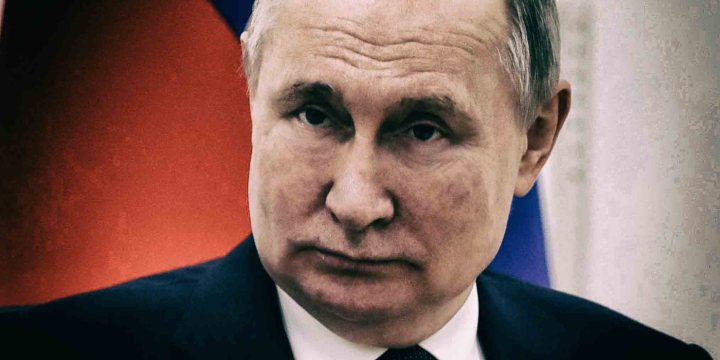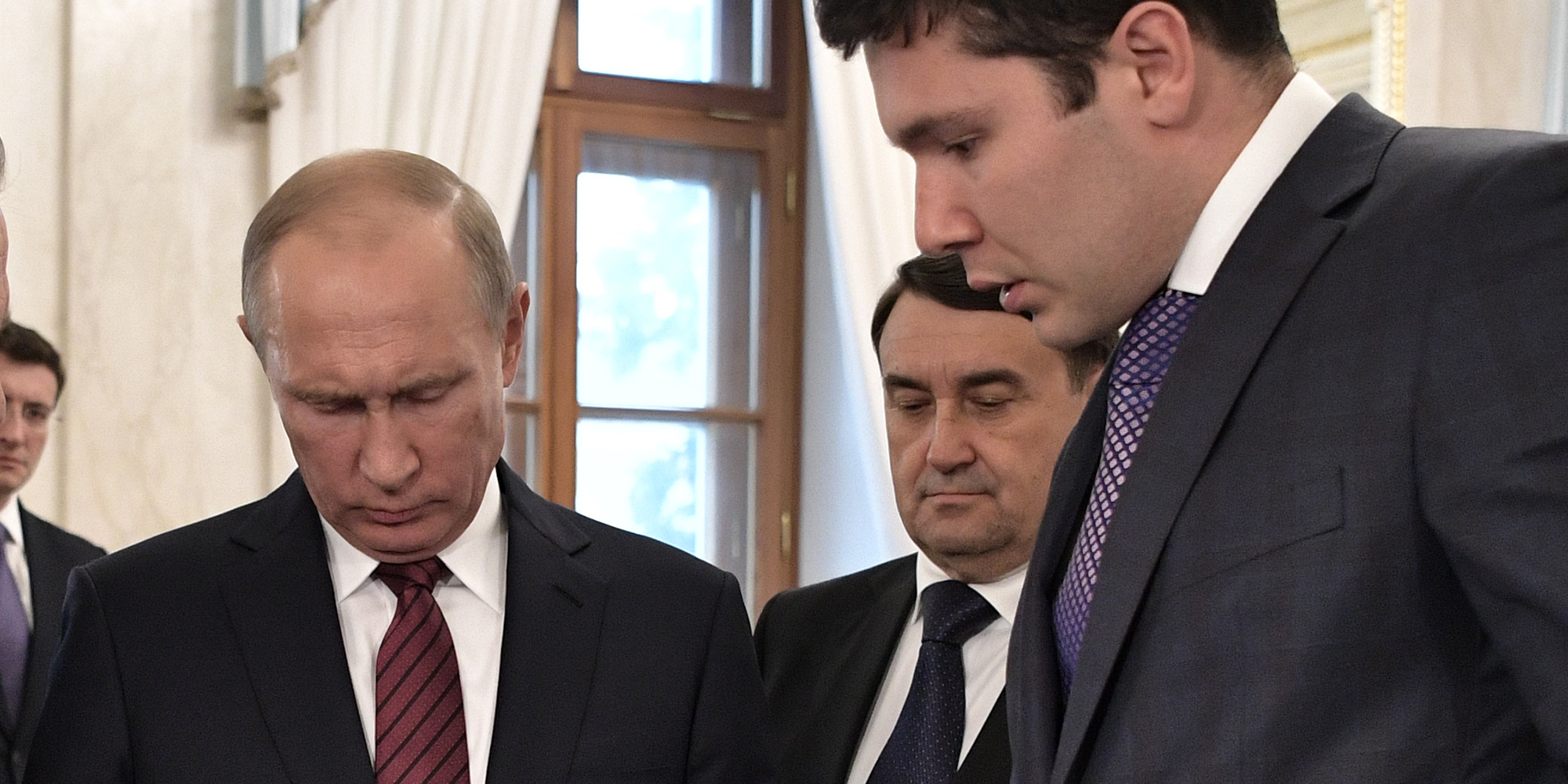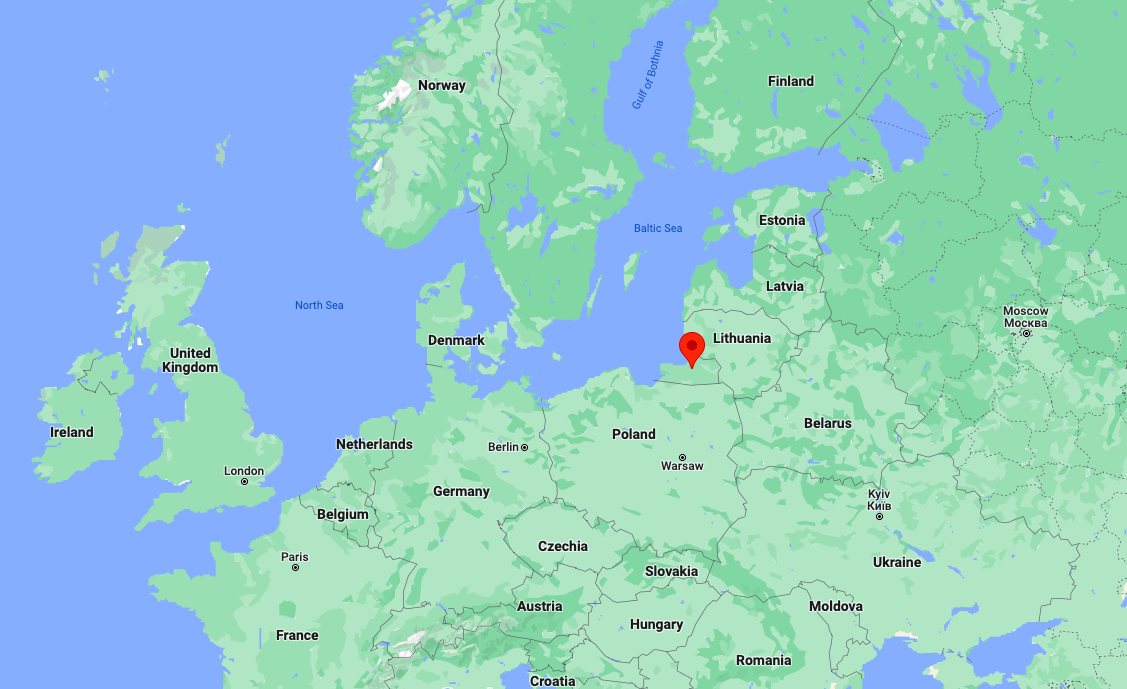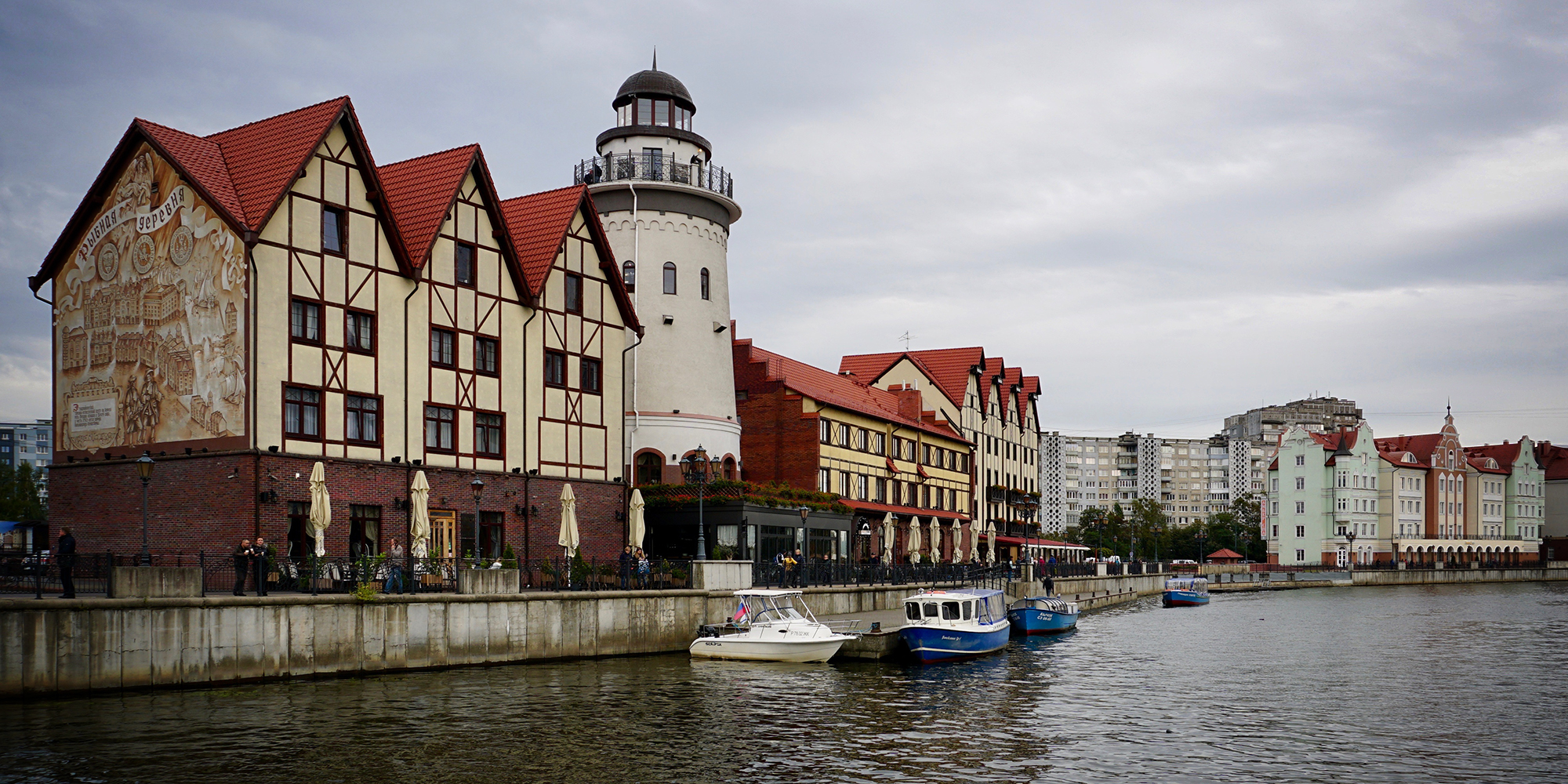WAR IN EUROPE
Why Russia sees Kaliningrad as a new strategic flashpoint

Quite suddenly, Kaliningrad — formerly East Prussia, the Russian enclave fronting on the Baltic Sea and bordering Lithuania and Poland — has become a new Eastern European crisis point as Kaliningrad’s supply lines from Russia are being constricted by Lithuania in accord with Nato and EU strictures. The Russians are going to be very angry about this.
So far, the Russian invasion of Ukraine has delivered vast damage and devastation upon the latter nation, caused thousands of fatalities to civilians and military personnel alike, had a growing negative impact on the Russian economy and shattered the myth of an invincible, unstoppable Russian army.
Instead, we have all been observing the tactical (and strategic) behaviour and skill of the Ukrainian forces, as they have increasingly been bolstered with modern, first-line Western military materiel. As more and more of that weaponry comes into play, there is even the tantalising possibility the Russian invaders will be facing a larger, theatre-wide defeat — over time.
If so, this will come at a great cost to the defenders, in what has become what the military planners call a brutal war of attrition. Such a success, however, will come despite ongoing Russian advances in Eastern Ukraine.
Of course, the consequences of this invasion, beyond the impact on Ukraine, now include a potential catastrophe on food security in Africa and the Middle East.
The vast exports of grains and edible oils from Ukraine have largely been halted by a Russian naval blockade of Ukraine’s remaining ports, and the supplies are not leaving Ukraine for their intended recipients.
Moreover, the two long-time neutral nations of Sweden and Finland have made a decisive break with their post-World War 2 history of neutrality in the Cold War, and have sought membership in Nato, now, as Russia’s military moves have dispelled illusions about its current (and likely future) behaviour towards those two Scandinavian nations.
Concurrently, Ukraine is now hoping to fast-track its admission to the European Union (and an affiliation with Nato still a desirable goal for the beleaguered nation).
But now, there is another aspect to the conflict few expected would become important. It has the possibility of becoming an awkward strategic question for Russia, even if it does not evolve into an actual shooting war.
Kaliningrad and Lithuania
This, of course, concerns the Russian enclave of Kaliningrad. The Kaliningrad Oblast [county], and the main city within it by the same name, is a smallish piece of territory bordered by the Baltic Sea, Lithuania and Poland. It is located well to the west of the rest of Russia and there is no direct land connection between the enclave and Russia.
There are several strategically important aspects to Kaliningrad’s circumstances. First of all, almost everything that arrives in Kaliningrad from the rest of Russia — from fuel to food to consumer goods — until now, has been arriving by trains that pass through Lithuania. But, those shipments are to be (or already have been) restricted due to the combined weight of sanctions and punitive trade restrictions being imposed on Russia by EU nations and the Nato alliance as a result of Russia’s invasion of Ukraine.

Russian President Vladimir Putin (left), and Kaliningrad region governor Anton Alikhanov (far right) in Moscow in October 2017. (Photo: EPA-EFE / Alexey Nikolsky / Sputnik)
These restrictions are generating some sharp verbal responses by Russia, but with the warning of increasingly dire consequences should the restrictions continue. These restrictions will certainly make it much more difficult to supply the inhabitants of the territory with their needed supplies, as well as supporting the military readiness of Russian forces deployed to Kaliningrad — including, reportedly, nuclear missile emplacements.
As Defense News reported on 22 June, “Lithuania imposed a ground transit ban of EU sanctioned Russian goods through its territory on Saturday, cutting off the Russian exclave of Kaliningrad Oblast [county]. The governor of the oblast, Anton Alikhanov, said the ban will block half of all goods coming into the territory, the majority of which travel via railroad. The ban will also cut off Kaliningrad’s only oil pipeline from Russia.
“The move comes on top of the EU flight ban of 21 Russian-certified airlines in April, preventing goods from being flown into Kaliningrad as well. The only uninterrupted method of transit left to the territory now is by way of the sea through international waters. In response, Russia said Lithuania will face ‘serious’ unspecified consequences for the actions.

A map with a pin showing the Kaliningrad Region. (Map: Google)
“With Lithuania being a Nato member, any direct military action by Russia would trigger Article 5 of the treaty and the entirety of the alliance would be at war with Russia.
“During the State of the Union Address, U.S. President Joe Biden vowed to defend ‘every inch’ of Nato territory. In March, the U.S. bolstered its presence in Lithuania, bringing the number of soldiers stationed in the country to around 1,000.”
Defense News went on to note that “Russia has called the transit ban a ‘blockade’ and said the move is a violation of international law…”
Lithuania defended the ban, saying it is simply a step taken to comply with the EU sanctions which have been implemented on Russia since their invasion of Ukraine in late February.
“‘The transit of passengers and non-sanctioned goods to and from the Kaliningrad region through Lithuania continues uninterrupted,’ the Lithuanian Foreign Ministry said in a statement. ‘Lithuania has not imposed any unilateral, individual, or additional restrictions on the transit. Lithuania consistently implements EU sanctions, which have different transition periods and dates of entry into force.’”
Baltic Sea
The second importance of the territory is that because its port remains ice-free over the winter, it is, in fact, Russia’s only consistently ice-free port on the Baltic Sea. This makes it strategically important for year-round operations by Russia’s Baltic Sea naval forces.
This apparently unanticipated (by the Russians, at least) move by Lithuania — on behalf of the Nato alliance — has clearly rattled Russians who already must contend in their strategic planning with the doubling of the direct Russia-Nato border, by virtue of the impending accession of Finland (and Sweden) into Nato.
This makes the Baltic Sea a kind of Nato-controlled lake and has added to the potential for naval watch posts on Swedish and Finnish islands located in the Baltic, and patrols extending outward from them.
Russian naval vessels will increasingly find their circumstances that much more difficult whenever they attempt to traverse those sea lanes. This will be whether they intend to sail into the Atlantic or to return from extended patrols beyond the Baltic. Such vessels will find themselves even more effectively tracked and monitored by Nato naval and air units in future.
Russia’s acquisition
But how did Russia end up with this wedge of territory under its control, separate from the rest of the country and tucked awkwardly in between Lithuania and Poland?
Kaliningrad is the northern half of what used to be called Germany’s province of East Prussia. Originally the home of the (non-Germanic) Prussians some 900 years ago, the region was conquered and Christianised by the military campaigns of the Teutonic Knights. Subsequently, Prussia was partially conquered by the Poles after the First Battle of Tannenberg, although they eventually lost the region to the small German kingdom of Brandenburg following the decline of the Polish-Lithuanian Commonwealth.
Brandenburg was eventually renamed Brandenburg-Prussia, then eventually simply Prussia in recognition of that long German history of conquest.
Prussia led the unification of the German states into one nation in 1870. Over the years, the city of Konigsburg had become an important centre of education and culture, with notables such as the philosopher Immanuel Kant and the writer/composer ETH Hoffman in residence there.
At the end of World War 1, East Prussia was divided from the rest of Germany by the Polish Corridor and Danzig — thus becoming one more grievance for German irredentism that led to the rise of the Nazis and Adolf Hitler.
After the total defeat of the Third Reich in 1945, the extensive destruction of East Prussia’s capital, and the conquest of the area by the Red Army as part of its military advance on Berlin, the territorial transfer to the Soviet Union took place. (A portion of Prussia was also ceded to Poland when that nation’s borders were shifted westward to include former parts of Germany such as Silesia and West Prussia, and surrendering parts of Ukraine to the Soviet Union.)
These territorial transfers were agreed to at the Potsdam Conference by the victorious Allies.
Following that territorial change, those Germans who had not already fled the advance of the Red Army were forcibly repatriated to the remaining German territories, and a new population of ethnic Russians was moved into Prussia, with the region and capital now renamed in honour of Russian Revolution-era hero, Mikhail Kalinin. (Vladimir Putin’s now-divorced wife was from Kaliningrad, just by the way.)
Good neighbourhood
For Russians, Kaliningrad had been viewed as a good place to live and work, especially given its proximity to other non-Soviet Union territories and its circumstances as a preferential recipient of goods, services and government spending.

Kaliningrad is the capital of the Russian province of the same name, sandwiched between Poland and Lithuania along the Baltic Coast. (Photo: Flickr)
Until the collapse of the Soviet Union, Kaliningrad was supplied by rail through a Lithuania that had also been part of the Soviet Union. But, following the breakup of that nation, Kaliningrad’s position now became an enclave physically separated from Russia, and circumstances that were even more complex once Poland and Lithuania shifted their affections westward and joined Nato and the EU.
An echo of Berlin
In an interesting way, Kaliningrad can be seen as a kind of echo of the position of West Berlin during the Cold War, to the Russians’ evident unease and discomfort, given their ongoing military campaigns further to the south in Ukraine.
During the Cold War, the western half of Berlin was deep inside the Warsaw Pact member, the German Democratic Republic, and surrounded by that nation’s troops, Soviet military units, and a high wall built entirely around the Western half of the city. (Germany and its capital had been divided into zones of occupation at the end of World War 2, and those zones were eventually transformed into the two nations — West and East Germany.) The infamous wall had been constructed in 1961 by East Germany to prevent the further migration of its population to West Berlin or on to West Germany.
Over the years, Berlin had been the source of much East-West tension. This began with the blockade around the western zones of the city back in 1948 that had required a massive airlift of food, fuel and other supplies into the city by Western air forces — including crews and planes from South Africa.
More than 20 years later, during the Kennedy administration, a Soviet threat of another land blockade (or even a possible movement of troops into the western parts of the city) was followed by East Germany’s construction of that wall and yet more tensions between the two nuclear superpowers.
Ultimately, however, the collapse of the East German regime led to the end of the Warsaw Pact as well as the old Soviet Union, then the unification of West and East Germany, and ultimately the newly combined nation’s place as a keystone of Nato.
Throughout the Cold War, Nato military strategists were always worried about the circumstances of Berlin, but they focused even more obsessively on the possibility of a Soviet combined arms attack on Germany through the Fulda Gap of Thuringia on the theory that such an attack could prove to be a decisive move that would split the entire military situation in the Soviet Union’s favour.
Now, perhaps, the Russians must contemplate a second potential zone of conflict they will somehow initiate that could actually overstretch their military capabilities.
A final stray thought: In Russia’s daydreams about getting out of the mess they have created for themselves, perhaps they may even consider the notion of returning their half of East Prussia to the Germans, once the Ukrainian conflict comes to an end and the Russians must reconfigure their strategic position in Eastern Europe.
Now wouldn’t that be something to see. DM




 Become an Insider
Become an Insider
Comments - Please login in order to comment.